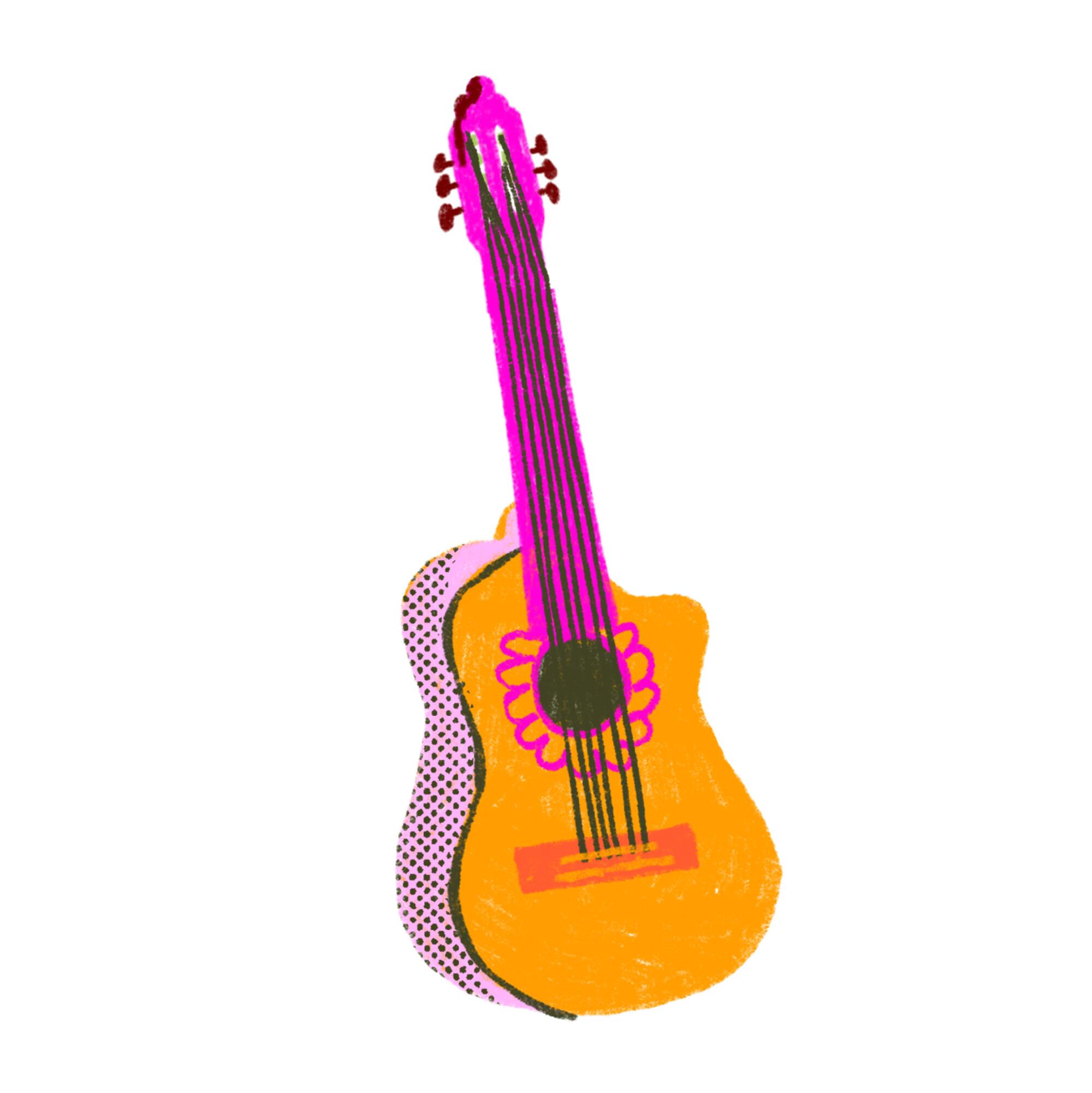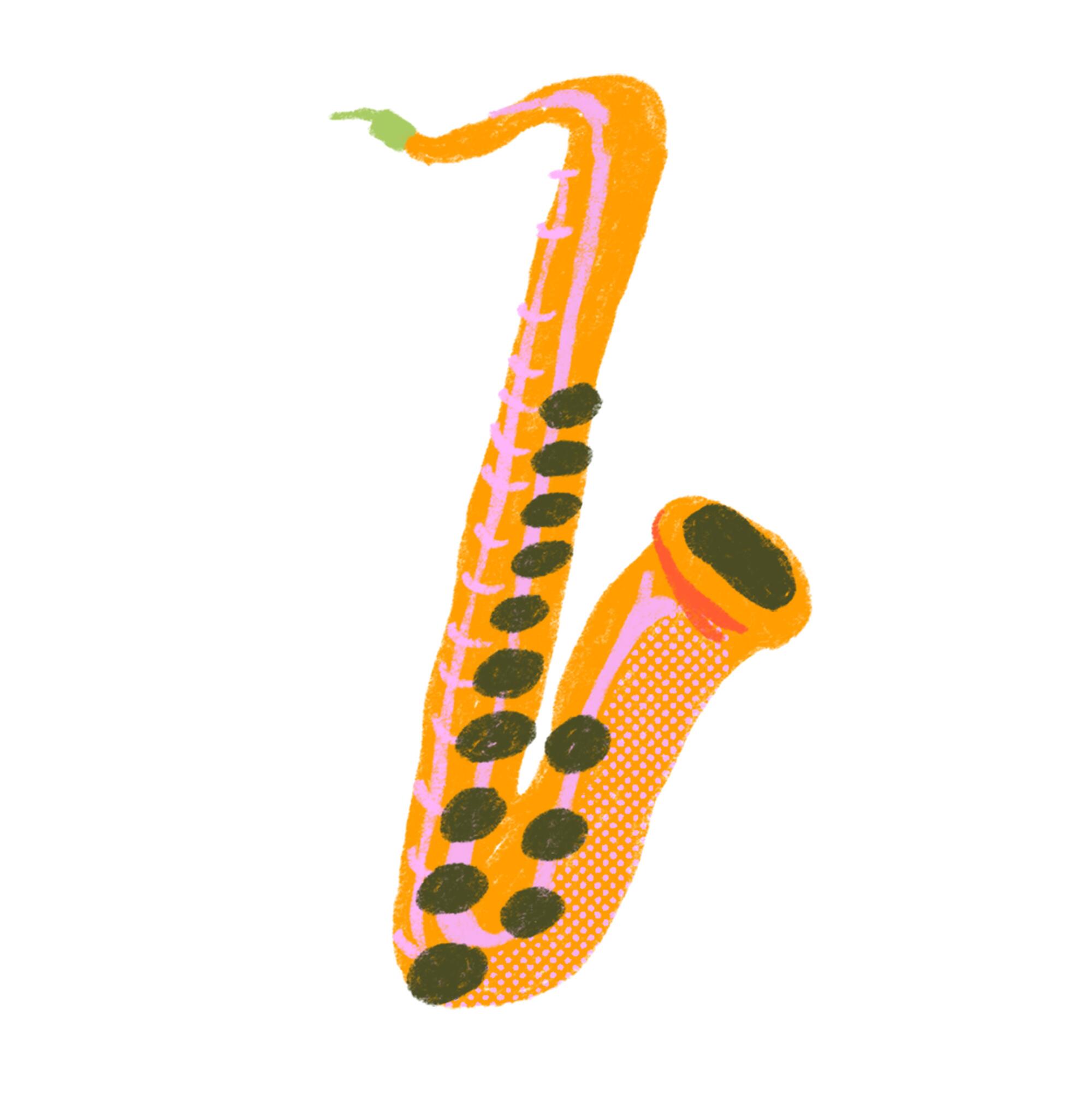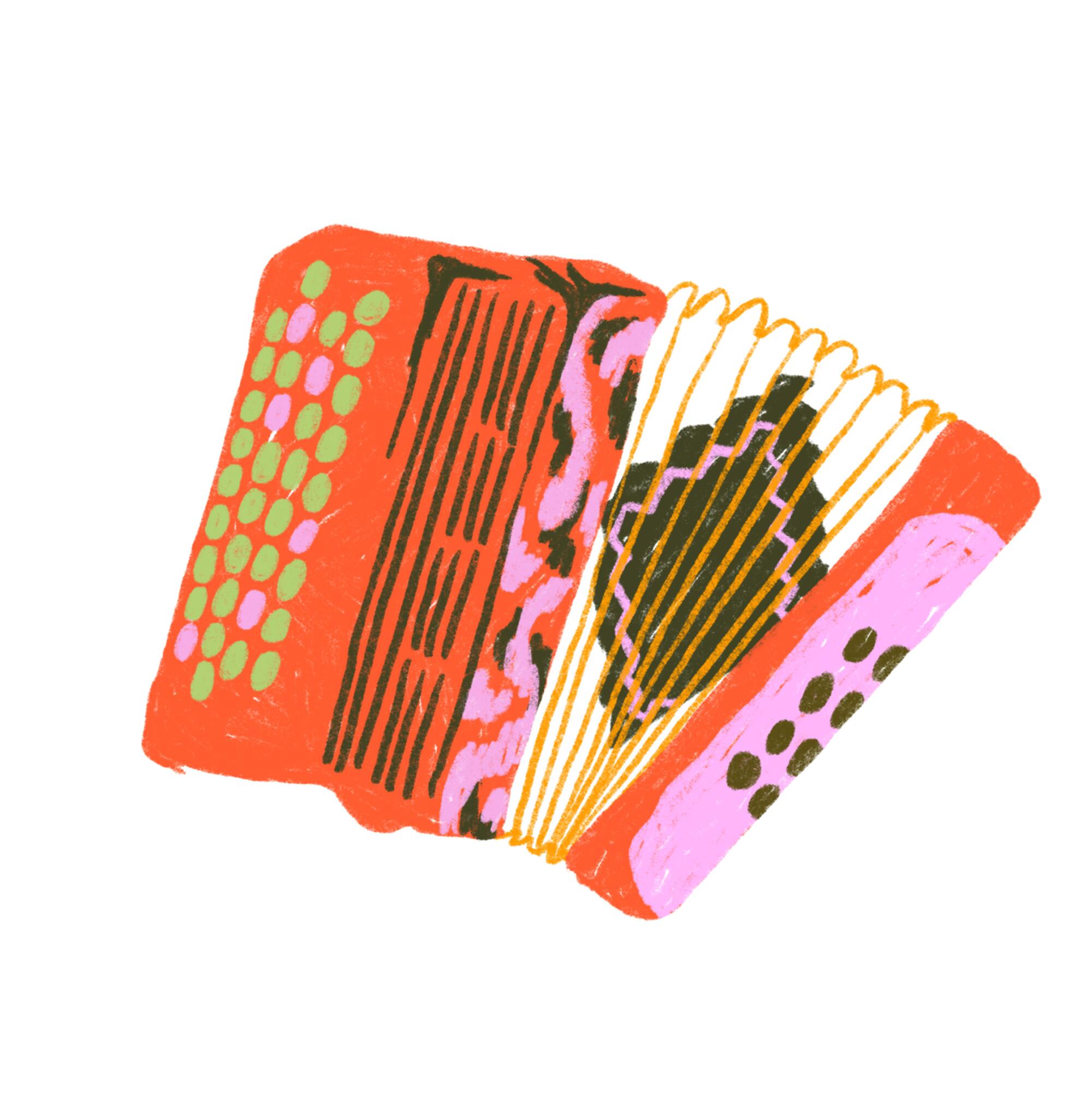From the powerful mariachi guitars on “Cielito Lindo” to the mighty accordion on Los Tigres del Norte’s “Ni Parentes Somos” and even the drums on Natanael Cano’s corrido tumbado, the sound of Mexican music is unmistakable.
This ever-changing genre has a history of blending with other styles. And, in the process of creating new sounds, new instruments were also created.
Mexican musicians are constantly finding ways to evolve, whether it’s incorporating an instrument that dates back to the Mayan civilization or redefining the instrument to create something unique, like the folk accordion that came from Europe in the 19th century.
As Mexican music artists blaze their own trails, fresh sounds like pop singer Estevi’s experimental melodies and Fuerza Regida’s “Jersey Corridos” have emerged, giving listeners a wide range of experiences to choose from.
This is by no means an exhaustive list of all the instruments used in Mexican music, but here are some of the most prominent sounds of the genre.
tololoch
Originating in southern Mexico, this double bass is all about slap: the raw, forceful sound created when the string hits the fingerboard. Closely related to the European double bass, the tololoch is smaller in size. Jorge Cárdenas from the group Serreño those for now He considers it the most “utilitarian” of all the instruments in Mexican music; it can be used in corridos, mariachi and norteño without the need for amplification.
“It’s always the missing ingredient. You can have a million instruments, but if there’s no bass, it’s empty,” Cardenas said. “My style is a mix between the raw aggression of rock ‘n’ roll and a kind of clean sound of mariachi music.”

Requinto
As the lead guitar in Mexican music, the typically fast-paced, high-pitched requinto is easy to recognize. Its spread is credited to Los Panchos, a popular romantic trio from 1940s Mexico City known for the hits “Bésame Mucho” and “Sabor a Mi,” recorded with American jazz singer Aidy Gorme. A requinto can have five, six, or 12 strings and is typically tuned higher than a standard guitar. Diego Magaña, a member of the Los Angeles band Arsenal Dorado, plays a 12-string requinto and lends his style to “old-school Mexican music,” when the guitar is “a little simpler and heavier.”
“It’s the one that does all the magic and the background noises,” Maganya said. “Sometimes you hear sounds that you didn’t even know were coming from the guitar. I like to keep it simple. Although I do do a little bit of, you know, dazzle here and there.”

Vihuela
Resembling a smaller version of the guitar, the vihuela allows the mariachi string section to reach a higher range. The A, D, and G strings are tuned an octave higher than a standard guitar, adding a new level of tonality. Growing up surrounded by mariachi music, singer-songwriter and member of Las Chorizeras Nancy Sanchez says she fell in love with the vihuela singing style called “los manicos.” As she experiments between up and down, the powerful strike gives the stringed instrument a more percussive feel. Drawing from her roots in traditional mariachi music, she uses the vihuela as a way to put a new spin on her sound.
“I use the vihuela artistically and I approach it as a composer first,” Sanchez said. “On the contrary, the playing is very traditional. I love to play with extended chords (notes above the seventh scale). I like to add different maniocs. I like to cut it up. It just gives it a different feel.”

turn
At the heart of many Latin music genres is the rhythmic beat of the cumbia drum. Its cylindrical body, usually made of wood or metal, is covered with a grooved or toothed surface that allows the player to scratch the sides and produce a sound comparable to that of a drum. This handheld instrument is essential for synchronizing the band and dancers in rhythm. Alan Vega, a producer and singer who has collaborated with singers Estevi and Sofia Reyes, sees the drum as “the most important and recognizable part of cumbia percussion.”
“If you take it out (the music) it takes away the emotion,” Vega said. “Some cumbias have this growing feeling, and when everything starts happening and it feels like a party… you have to start dancing.”

saxophone
This brass instrument, which became important to Mexican music in the 1940s, allowed bands to focus more on melody. In the group, the saxophone plays the lyrical part of the song. Manny Dorado, member Drama of the Eagle and the Serpent An alto saxophone player, he appreciates the instrument for its “bright palette (and) a bright but fresh sound.” He first embraced the instrument with the intention of playing jazz; when he realized how versatile it was in Mexican music, he changed his mind.
“It can be very similar to the human voice, especially the contralto voice,” Dorado said. “It’s louder, but it still has some low tones, so it can represent the sound of a contralto.”

Fifth down
Similar to an acoustic guitar, the bajo quinto is a bit larger, has a jagged edge, and can be identified by its deep, haunting sound. With five pairs of steel strings, the aggressive guitar is responsible for following the requinto and enhancing the melody with its metallic tone. Andrés Torres, of the corrido group Los Torres, says the bajo quinto gives “a different touch” to Mexican music. He performs alongside his brothers and spends his time traveling the country and bringing back as many bajoquintos as possible.
“I feel like the energy of the bajo quinto, the way it plays and the sound is really something special,” Torres said. “Mexican music has a special energy that I don’t think you can find anywhere else.”

Accordion
The accordion entered the genre through the polkas of German and Czech immigrants and quickly became a staple in several subgenres of Mexican music, including cumbia (think Celso Pina’s “Cumbia Sobre el Río”) and norteno (e.g., Ramón Ayala’s entire discography). When played in these contexts, the loud instrument takes on a different tuning, called diatonic, meaning it can only play a limited range of notes in a particular key. There are two types of accordions, one with piano keys and one with buttons, but they have the same effect. Cristian Salazar de open doora corrido group in Los Angeles, was drawn to the box-shaped instrument for its ability to lead the group.
“It has its own energetic character in Mexican music,” Salazar said. “It represents a lot of my personality and how I present myself on stage; you could say I’m an attention-getter.”

guitarists
Nearly every mariachi band includes a large bass guitar, often twice the size of the player – the guitarist. A large, guitar-shaped instrument with a V-shaped back, it has six strings and keeps time for the rest of the band. Its resonant growl sharpens the sound of the lead guitar and makes its presence matter. Stephanie Mejia, guitarist and founder Crazy Valley MariachiWhile studying at the Plaza de la Raza School of Performing and Visual Arts, she connected with her passion for mariachi music. Moving from guitar to vihuela and finally landing on guitars, the San Fernando Valley musician latched onto the bass as an act of women’s empowerment, played by men.
“My instrument has a special meaning to me. I bought (my guitarrón) from the musician Alejandro Fernández (the mariachi singer and son of Vicente Fernandez) who passed away recently,” Mejia said. “A lot of people don’t know about it or maybe don’t appreciate it. But in some ways it seems to have slipped my mind.”

Violin
Generally recognized as an orchestral instrument, the violin is one of the main components of mariachi melodies. Separated from the rhythm of this group, its four strings add an element of inspiration to the traditional style of folk music. Many mariachi bands have several violinists who work together to create a fuller sound, although each has different responsibilities. Charizards For violinist Anisette Noperi, the instrument is a family affair, as her father and brothers also play. As someone who trained in orchestra and mariachi, she is excited to see how contemporary Mexican music artists experiment with the violin.
“I know how to play traditional mariachi music, but at the same time, (contemporary Mexican music) keeps us going,” Noperi said. “All these new sounds we can absorb make us better musicians.”
